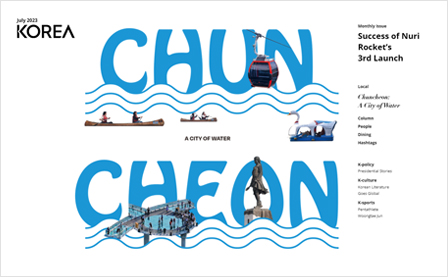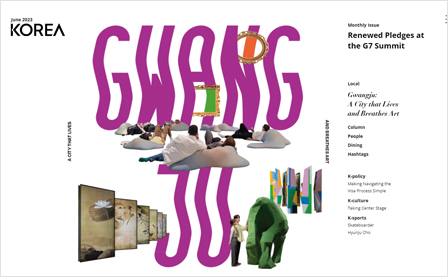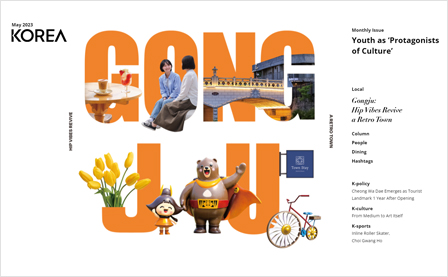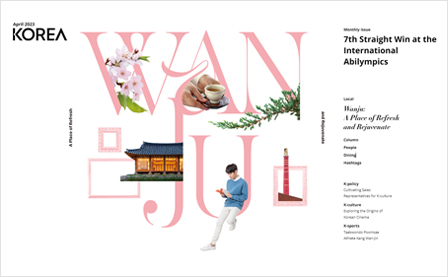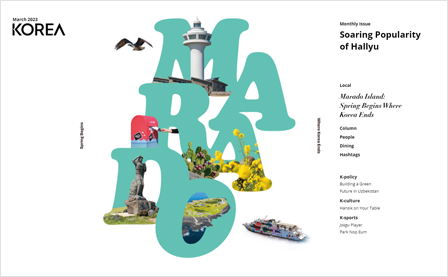August 2023

ESG Report

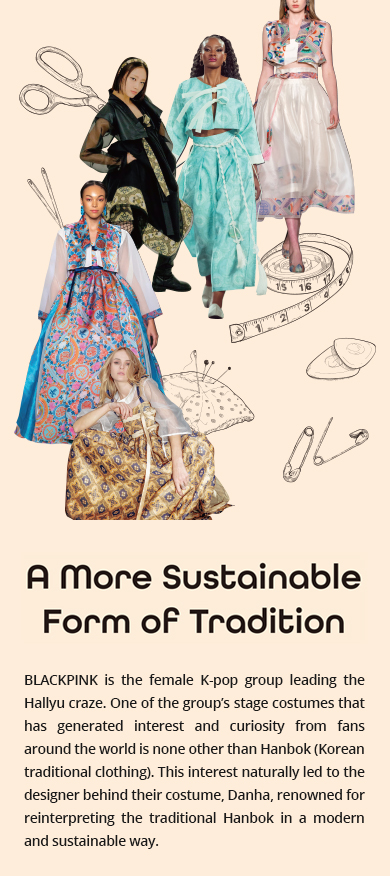
Photos Courtesy of Danha
Hanbok, Eco-Friendly Clothing
Hanbok is a style of clothing loved by Koreans for its unique elegance and grace. It is also a type of eco-friendly clothing because once purchased, it can be worn for decades. The reason why it can be worn for such an extensive period of time lies in the way the garment is made.
Natural dyes and fibers, as opposed to synthetic ones, are used to create traditional Hanbok. These fibers are sourced from nature and require little to no chemical treatment during processing. Above all, natural fibers are biodegradable, which means they have very little impact on the environment.
The biggest feature of the Hanbok is its durability. The garment doesn’t change even if worn for decades. The garment is easy to mend, which means it can be repaired by the owner instead of having to go to a shop. Being able to reuse and repair clothing is an eco-friendly way to save resources and reduce waste. As such, the Hanbok is a garment that conveys style and beauty without harming the Earth. Danha is a brand that protects the environment while preserving the characteristics of the Hanbok.
Danha creates Hanbok from eco-friendly materials that are harmless to people and nature. Rather than following trends, the brand pursues sustainable “slow fashion” by creating Hanbok that can be worn for a long period of time. Danha’s corporate philosophy contributes to the improvement of various problems associated with “fast fashion” as well as environmental problems that cause climate change.
Danha’s Hanbok are mainly made from eco-friendly materials such as organic cotton and recycled fabric. Organic cotton is cotton that is grown on farmland that has not used pesticides or chemical fertilizers for three years. It can safely be used by people with sensitive skin and children. Recycled fabric is a type of material made from recycled plastic bottles. The fabric has good resistance, which increases its longevity because it does not lose its shape even after several washes. These are the perfect materials for the slow fashion pursued by Danha.
 A pouch made from Asiana Airlines’ discarded uniforms.
A pouch made from Asiana Airlines’ discarded uniforms.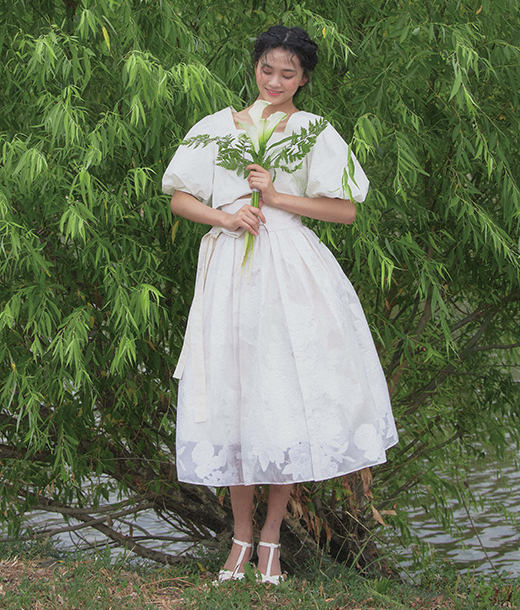 A blouse and skirt made from used wedding dresses.
A blouse and skirt made from used wedding dresses. 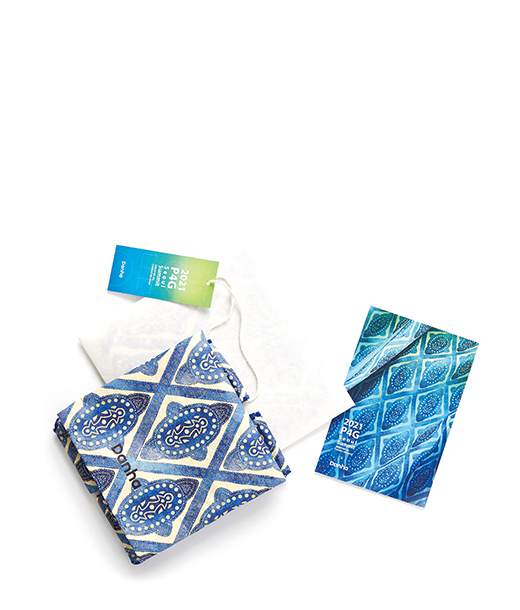 An eco-friendly bag made from recycled PET bottle yarn.
An eco-friendly bag made from recycled PET bottle yarn.Reinterpreting Tradition in a Modern Way
Danha pursues slow fashion, but the brand’s designs are far from ordinary. Danha’s Hanbok are based on traditional manufacturing methods, yet they feature a design that breaks the boundaries between clothing for men and women. The Hanbok maintain the feeling of tradition, but utilize modern materials and colors.
Wide undergarments have become stylish wide pants with a translucent look created by the use of nobang, a thin nobang (a thin silk material) used for the summer Hanbok. Dopo (traditional robe) has been transformed into outerwear for women. Danha has changed the perception of traditional clothing that is only seen as old-fashioned and uncomfortable to wear.
BLACKPINK is the K-pop group that paid homage to the originality of Danha’s designs by wearing their Hanbok as outfits in their music video. People from around the world began paying attention to Danha and the Hanbok after being mesmerized by the outfits worn by BLACKPINK.
BLACKPINK showcased an incredible performance in the music video for “How You Like That” by wearing traditional Korean patterned jeogori (top), skirts and dopo. Integrating Hanbok into BLACKPINK’s performance resonated with many people, and the garment became a fashion style rather than a form of traditional clothing.
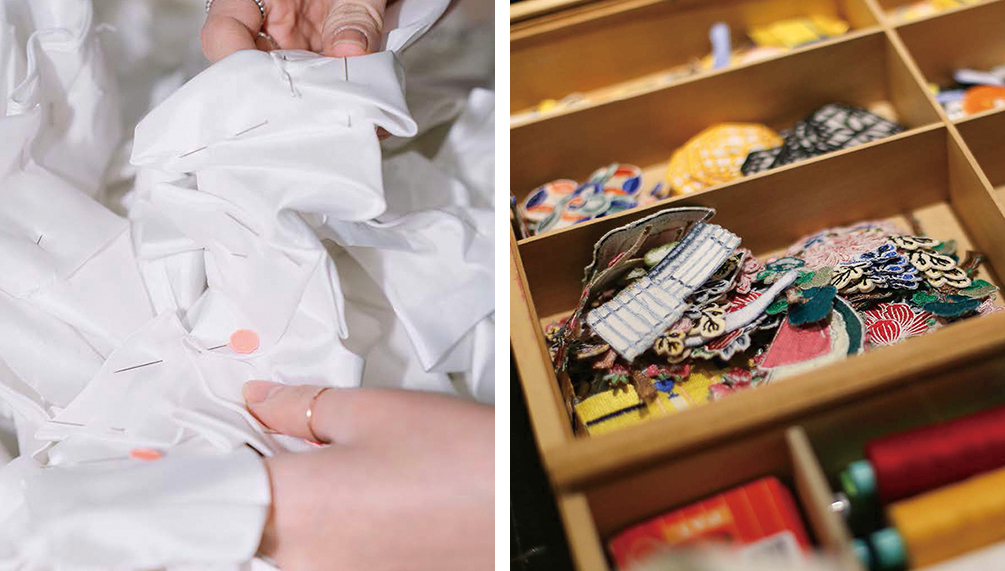 (Left) Danha upcycles high-end imported wedding dresses, which are typically worn an average of four times before being discarded. (Right) Danha offers classes where individuals can create pouches using used Hanbok and make their own patches.
(Left) Danha upcycles high-end imported wedding dresses, which are typically worn an average of four times before being discarded. (Right) Danha offers classes where individuals can create pouches using used Hanbok and make their own patches.Upcycling the Fashion-friendly Way
The Hanbok is to Korea what the wedding dress is to the West. It is the wedding dress that makes the bride, the main person in a wedding, shine, but there’s no way to use the dress again in everyday life. Wedding dresses are also very fashion-forward, and most people only wear them about four times before putting them away. Wedding dresses use more fabric than regular clothing, so many of them are made with relatively inexpensive synthetic fibers rather than expensive silk. This eventually leads to environmental pollution as the materials aren’t biodegradable.
Danha has upcycled these discarded garments and has created harmony between the Hanbok and the wedding dress. Upcycling a wedding dress is a more demanding process than other garments. A complicated disassembly process is required to obtain the pure fabric from the dress. The beading and lace that adorn the dress also have to be carefully removed during the process. Danha has developed a complex dismantling process to create new designs for Hanbok. It is one of the many reasons Danha has continued to receive recognition from people all over the world.
Danha is promoting Korea’s unique traditional Hanbok to the world while preserving the environment. We look forward to seeing the incredibly creative ways in which Danha will continue to change the Hanbok in the future.
 View of all
View of all